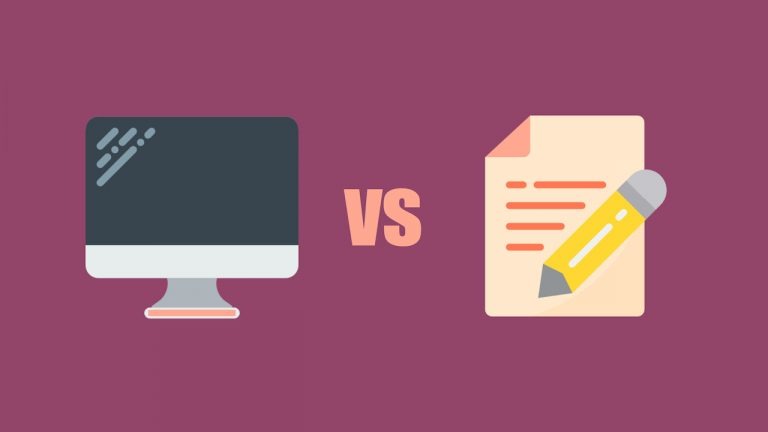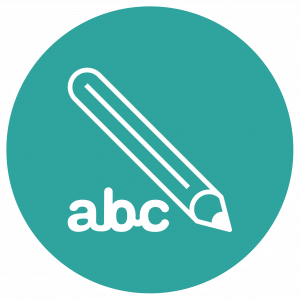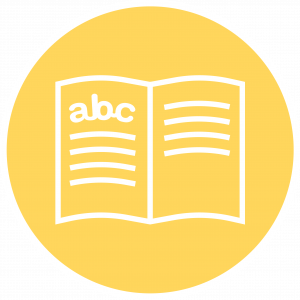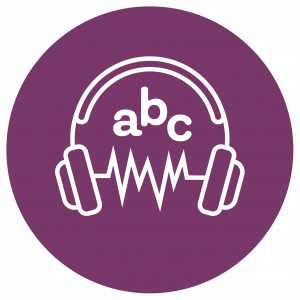
IELTS Computer-Based Test vs Paper Test
The introduction of the new IELTS computer-based test has given students a new option in terms of the way that they sit the test. However, it has also raised the question, which test is right for YOU? Many articles have appeared that outline simple differences between the tests (“it is quicker to type” and “good for people with bad handwriting” are the most common comments!)
But today I want to take deeper look from a pedagogical perspective into which is the best format for test-takers. First though, let’s get some basic facts about the CB test out of the way:
IELTS Computer-Based Test Facts
- The components of the computer-based test and the paper test are EXACTLY THE SAME i.e. you will still be tested in reading, listening, writing and speaking (and you should note that speaking will still happen with a live examiner on the same day)
- All of the question types are EXACTLY THE SAME so don’t think, for example, that you can avoid Headings Match questions in the computer-based test!
- The computer-based test has EXACTLY THE SAME LEVEL OF DIFFICULTY as the paper-test – I find it hard to believe that people don’t realise this!
- The marking criteria for both tests is EXACTLY THE SAME, so you still need to focus all of your attention on the IELTS band descriptors for writing. Also, your writing is still marked by a human examiner!
In short, in terms of what you are being tested on and how your results are calculated, the IELTS computer-based test and the traditional paper test are EXACTLY THE SAME.
Which is best for you – IELTS on a computer or IELTS on paper?
However, even though the only difference between the IELTS computer-based test and the traditional paper test is the method in which it is delivered, I do still think that the different tests suit different students. Let me show you why by going through each part of the exam and looking at the pros and cons of the computer-based test so you can decide which is best for you.
IELTS Computer-Based Test: Writing

- It is quicker to type on a keyboard than write by hand. This is the most obvious benefit of the computer-based test. Hardly any of us write by hand in our day-to-day lives anymore, and I personally struggle to write quickly and clearly with a pen and paper (although the examiner NEVER assesses your handwriting, so legibility is not a concern!) I guess writing 250 words by hand would take me roughly 10 minutes, but I can type that much roughly 3-4 (yes, I am pretty speedy). As time is a concern for most students, those extra 5 or 6 minutes can make a huge difference. You can spend more time brainstorming or checking for errors. So, if you are a fast-typer, then you will obviously gain time using a keyboard. However, although this is the most obvious benefit, I do NOT think it is the most important.
- You can edit your work more easily. For me, this is the BIGGEST ADVANTAGE of the computer-based test. NOBODY WRITES IN A LINEAR WAY ANYMORE. Computers allow us to make quick changes to our writing, which means we often start sentences without knowing how they are going to end because we can delete phrases or try new words or move bits around until a sentence feels right! This is the beauty of writing on a computer – it allows us to edit as we write. And, this is what our brains are now used to! Nobody sits down anymore with a pen and writes a whole letter without making one change! And yet in the paper-based module that is what you pretty much have to do. You have to know how your sentences will end before you start writing them because you don’t have time to sit and rub out sentences every time you change your mind! Conversely, in the computer-based module, you can move one idea from the first paragraph to the second with just a cut and paste. Or you can go back and change a verb or replace a word with a better synonym. In short, you can write in the cut and paste style that we are all used to today. For this reason alone, I believe that the computer-based test is better for 99% of students. However, the other big plus is that ……..
- You can review your work more effectively. Not only is it faster to type your work on a computer, it is much easier to revise what you have written. This is because everything is in a relatively small space and in a font that is uniform. In contrast, in the paper-based test you have to decipher your handwriting and go back and forth between pages. This makes errors much harder to find (especially small, costly ones like subject / verb agreement), and increases the likelihood that you will repeat words or even ideas without realising it.
- You don’t have to count your words! Yes, the computer-based test has an automatic word count. In a way, this is not really such an issue any more since IELTS removed the automatic penalty for under-length scripts. However, it is still important to write essays that are well-extended, and having the word count there in front of you at every step of your writing makes a big difference!
However, despite these four major advantages, there are still drawbacks that students should consider.
- No good if you can’t touch type! When I was at school, we had special lessons to teach us how to type on a typewriter (true story!) Today, I take it for granted that everybody can touch-type. However, if you are still using two fingers on a keyboard, then I would stick to the paper-based test!!!
- There is no spell-checker in the IELTS computer-based exam. Now, obviously you don’t get a dictionary in the paper-based test, so at first glance it might not seem a problem that you don’t have a spell-check in the computer test. I mean, in both you have to know the spelling of different words, right? Well, this is true. However, I am a native speaker with pretty good spelling, but I still make a lot of spelling mistakes when I am typing that I don’t make when I am writing by hand. Typing might be quicker, but it is also MUCH MORE INACCURATE. You might know how to spell a word, but it doesn’t mean that your fingers can accurately type it. Take for example the word “advantage”. I know how to spell it but almost every time I type it, I add an extra “n” before the “ge”. Why? I HAVE NO IDEA! It seems that my muscle-memory for typing that word is just wrong! Plus, as there is no spell checker, we don’t have the luxury of that lovely red line appearing under words to alert us to the fact that we have typed them incorrectly. But, guess who does have a spell checker? THE EXAMINER!!! I have never examined test scripts written in the computer-based module, but I am 99% sure the first thing the examiner who is marking your writing will do is switch on spell check and BOOM reveal all of your spelling errors! That means you are going to have to check your work VERY CAREFULLY for typing errors. And, if you are a BAD SPELLER, there is no more attempting to “hide” poor spelling with bad handwriting (yes, examiners know what you are doing!) Now, there can be no ambiguity if a word is spelt correctly or not. So, if you are a bad speller, you might find it better to stick to the paper-based test. A good way to try is to write an essay with your spell-checker switched off and then switch it on – if the whole page goes red, well, the paper-based test is best for you!
- New problems with punctuation. All of the students who join my marking service type their essays before sending them to me. And, over the last couple of years, I have seen some really strange punctuation errors when people type (errors that do not exist when people write by hand). I am not 100% sure what IELTS does about this (I mean, can you punish a student in the computer-based format for a mistake that cannot be made in the paper-test?), but this is something you should be aware of too. The two most common mistakes I see are:
- Leaving a space before a comma , or full stop . (like in this sentence)
- In addition, Having a capital letter after a transition signal. (like in this sentence)
IELTS Computer-Based Test: Reading

If the computer based test has the most obvious benefits for the writing part of the exam, then I would say it has the most obvious drawbacks for the reading part. Here, most people are concerned that they will not be able to highlight or underline parts of the text as they read. I have to admit, for an old-school teacher like me, this does seem like a serious concern. I have always relied on underlining parts of the text to help guide me.
Now, it is true that you can highlight words on the screen and make notes, but for me this is not the same as being able to do it by hand. If nothing else, it is slower.
Also, reading on a screen is different to reading on paper. On a computer, it is easier to skim and scan as you can can use the mouse to scroll through the text quickly, and much of what we do on a computer is scanning. Think about it – every time you Google something and search through the results, you are scanning! However, I personally find it harder to read in detail on a computer.
This is because when we read from a screen, we can only see one small part of a text, so it is harder to form an overview of the general idea of the text. I think that this could have a big effect on your reading, particularly when it comes to the reading questions that test your ability to summarise information, like headings match questions.
However, without more research, all of this is just my personal opinion. Here I think it comes down to personal preference. Do you work in a job that requires you to read on a screen? Yes? Then you will probably be fine taking the computer-based module. Do you wear glasses and find it a strain to look at a back-lit screen for 3 hours at a time? Yes? Then you might want to stick to the paper-based test. The key is actually TRYING the CBT to find out!
I have made a presentation about the official instructions to the Computer Based Test and how you should control the computer during your exam to ensure success:
IELTS Computer-Based Test: Listening

Headphones. That is the biggest thing for me. I have bad hearing and would struggle to listen to a single CD being played through dodgy speakers in an exam room with 20 – 100 other candidates! Yes, there are test-centres now where you can take the paper-based test that have headphones for the listening part, but for me, sitting in front of a computer with your own headset and nobody in your peripheral vision is the biggest plus here.
Also, when you are looking at a computer screen, you are less-likely to get distracted. I have always found that the hardest part of the listening test is keeping focussed for 25 minutes. When I was still teaching in real classrooms, I used to do the Cambridge tests with my students so that I could understand why they chose the wrong answers. However, there were countless times when I missed an answer because I was watching what the students were doing, or thinking about the next activity, or even just planning dinner!!! Having a computer screen to focus on and no pencil to doodle with should stop this happening!
Finally, one of my students also made the interesting point that when you take the test on a computer, your head is in an upright position because you are reading on the screen in front of you. As this is how we listen in the real world (i.e. not with our head down looking at a piece of paper), it feels more natural to listen in this position. I am not sure of the science behind this claim, but it does feel true to me.
However, like always, there are drawbacks.
The main one for me is again the fact that you can’t underline key words. This is very important in listening as the key words act as a guide to help you follow the dialogue. It is true that you can highlight words (like in the reading exam), but for me this isn’t quite the same as simply underlining with a pencil and might be more distracting than helpful.
Also, in multiple-choice questions, crossing out answers that are WRONG is the easiest way to find the correct answer. Without this option, MCQs will be much more difficult (and they are already difficult enough as it is!)
Finally, you will only be given TWO MINUTES to check your answers at the end of the test instead of the ten minutes in the paper-based test. I don’t think that this is good or bad as most of the answers in the computer-based test will be automatically recorded (i.e. when you choose a multiple-choice option, the computer remembers it for you) but poor spellers who need this time to correct mistakes might suffer.
More points to consider when deciding between the IELTS Computer-Based Test and the Paper Test
- the IELTS computer-based test might be more expensive in your area (I know that it is around £30 more expensive to sit the computer-based test in the UK)
- the IELTS computer-based test might not be available in your region
- the IELTS computer-based test is held more frequently in some test-centres than the paper test (which could be useful if you have a visa deadline or need to apply for PLAB)
- the results of the IELTS computer-based test appear much more quickly (3 – 5 days as opposed to 13 days for the paper-based exam). Again, if you are on a tight-deadline, this could make a big difference
OK – that is everything I have to say about the IELTS Computer-Based test. Which is right for you? Well, the only way to really know is to try one and see! And, whichever option you choose to take, My IELTS Classroom is still the best place to help you prepare!
